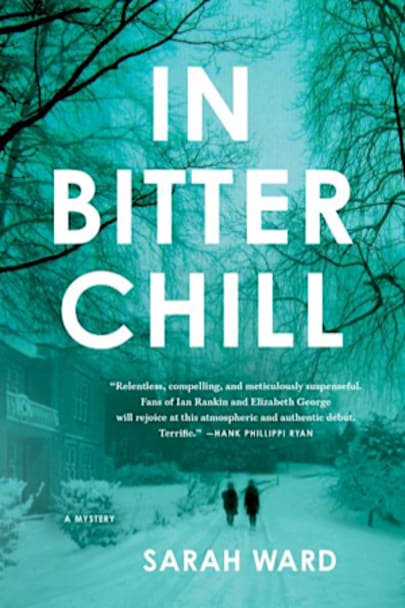The deepest secrets are the ones we keep from ourselves in this richly atmospheric, compellingly written, and expertly constructed crime debut from an emerging talent. Derbyshire, 1978: a small town in the idyllic English countryside is traumatized by the kidnapping of two young schoolgirls, Rachel Jones and Sophie Jenkins. Within hours, Rachel is found wandering alone near the roadside, unharmed … roadside, unharmed yet unable to remember anything, except that her abductor was a woman. No trace of Sophie is ever discovered.
Present day: over thirty years later, Sophie’s mother commits suicide. Detective inspector Francis Sadler and detective constable Connie Childs are assigned to look at the kidnapping again to see if modern police methods can discover something that the original team missed. Rachel, with the help of her formidable mother and grandmother, recovered from the kidnapping and has become a family genealogist. She wants nothing more than to continue living quietly beneath the radar, but the discovery of the strangled body of one of her former teachers days after the suicide brings the national media back to her doorstep. Desperate to stop a modern killer from striking again, Rachel and the police must unpick the clues to uncover what really happened all those years ago as the past threatens to engulf the present.
more



This is a brilliant whodunit crime novel; the first in the DC Childs mysteries. You need to concentrate though, as the plot is clever and complicated; blink and you’ll miss a subtle clue. I found myself totally absorbed by the familial ties and raced through to get to the conclusion. I really like the interactions between the various members of the police team: Superintendent Llewellyn, DI Francis Sadler, DS Damian Palmer and, finally, DC Connie Childs with her no-nonsense attitude and local knowledge. I like that Palmer and Childs have a slight competitive thing going on and that Palmer also has wedding wobbles, or is there more to it than that? The subtle complexities of their interactions are well portrayed; how spending all day at work with someone can give you a close look at their lives but somehow you can still know so little about them. This is ultimately a story about deeply unhappy families with lots of secrets and complications in their seemingly ‘normal’ lives, all beginning in an era when it was a woman’s ‘lot in life to get on with it and make the best of things’.
A suicide in The Wilton Hotel rakes up memories from a case in 1978 where two girls were kidnapped; Sophie Jenkins and Rachel Jones; only Rachel returned. The body in the hotel is the mother of the missing girl, Sophie, but it doesn’t make sense why, after all these years of heartbreak, she decided to kill herself and why there. It also doesn’t help with Palmer’s wedding nerves, as The Wilton is where he is having his wedding reception. When a murder is committed in ancient Truscott Woods, where Rachel Jones was found unscathed, more connections lead to an inevitable re-examination of a case that was never really closed – a time when policing resulted in lot of boxes of evidence to trawl through. As well as following the detectives’ investigations, Rachel has a voice, and the reader is given flashbacks to her vague memories of the kidnapping. Rachel’s life has never really moved on from that incident and the press swoop when interest in the case re-surfaces. Rachel is now a genealogist and spends her time delving into other people’s pasts – something her psychologist friend makes a link between.
There are lots of mysteries: why is there a sudden surge of hits on Rachel’s website? Why is Rachel so obsessed with her matrilineal line? Is there an NN (nomen nescio) – a person involved in the case who they haven’t yet come across? This is a story where odd socks, fragments of green and black, newspaper clippings and cottage hospitals lead the reader and protagonists in circles.
I enjoyed watching the gentle romance blossoming between Rachel and Richard, a man she met thought the local history society, and I kept my fingers crossed for how this would turn out. I like how not all policing in 1970s is rubbished and I love Ward’s detailed descriptions of Bampton and the Derbyshire Peak District. The ending is superb and very satisfying – I’ve already ordered the next in the series.
A decent mix of police procedural and psychological mystery. I would read another book by this author.